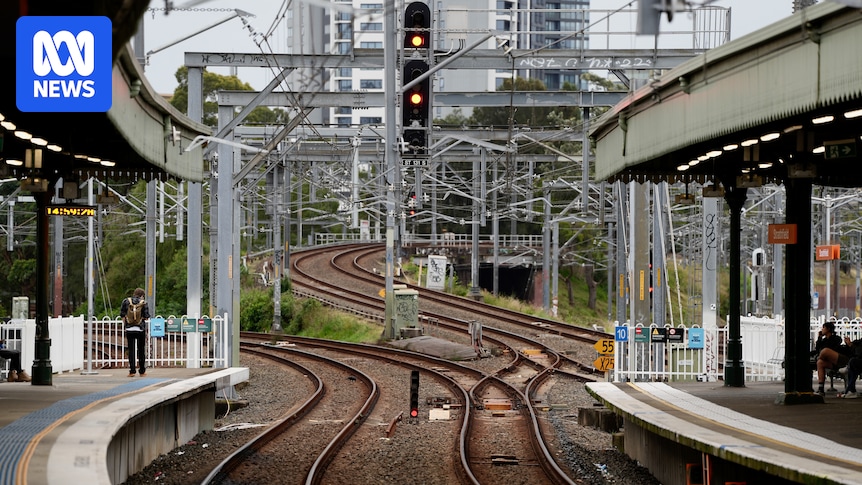It’s the question that crops up every time Sydney’s rail network plunges into chaos — can it ever truly be fixed?
For decades, Sydney’s rail chiefs, frustrated commuters, and train nerds have talked about what needs to be done to ‘detangle’ the network so a major incident on one line doesn’t have such a domino effect on the others.
The meltdown that unfolded across multiple lines in May after a live electrical cable came down on top of a carriage between Strathfield and Homebush was another reminder of how vulnerable the train network is.
While a review into that incident is still underway, it seems unlikely to propose any revolutionary solution.
Why? Well, according to rail experts like Sydney University’s Geoffrey Clifton, truly detangling the sprawling spider web of Sydney’s train lines would be way too expensive and cause years of disruption.
“If we had a magic wand, we would put all of this existing rail network underground, and we would separate them out into separate lines, completely segregated from each other so there was no overlap,” said Dr Clifton, who is part of the university’s Institute of Transport and Logistic Studies.
Commuters have faced delays, confusion and chaos on Sydney trains in recent months. (ABC News: Berge Breilan)
He added that it would take “tens of billions of dollars, if not more” to fix, too.
“It would mean having to move everyone off the rail network onto buses or onto roads for a substantial period of time, which would just be too disruptive for Sydney.”
Graham Currie from Monash University’s Public Transport Research Group agrees.
“Politically it is hard to spend money on things that don’t really increase services but do increase resilience, ” Professor Currie said.
“Resilience is only a problem one or two days a year, in fact even less than that.”
Graham Currie says the cost of revitalising the Sydney train network is a hard sell politically. (Supplied)
Sydney’s train network almost two centuries old
Sydney Trains CEO Matt Longland said since he was appointed to the role in 2021, such widespread network issues have only happened a handful of times.
“Sydney’s network is more than 170 years old. So we’ve got a network that has been built over time; it’s a complex network, and it’s a very busy network,” he said.
“We do have a number of key junctions … Strathfield is a good example of that; Granville is another one, Redfern, where it tends to impact not just one T-line but potentially the whole network.”
The problem is that up to six train lines pass through these critical junctions — sharing infrastructure like power and trackside signals, meaning a major problem on one line can spell disaster for the others.
Matthew Longland notes that Sydney’s train network is more than 170 years old. (ABC News: Greg Bigelow)
Mr Longland acknowledged how inconvenient those occasions were for commuters but said there are several major projects in the pipeline that would eventually make a difference — including the completion of the Southwest Metro from Sydenham to Bankstown and the Metro West from the CBD to Parramatta.
“It gives us backup if there is a major incident on the network,” he said.
“People will have an alternative. They can move on to this completely separate network to help get them home. But that doesn’t remove the need to operate our network more reliably.”
Multiple train lines pass through many of Sydney’s critical junctions. (ABC News: Patrick Thomas)
A new ‘long-term investment’
Mr Longland is also pinning his hopes on new technology that he said would make the network less problem-prone and help it recover faster — including digital signalling systems to replace the network’s 3,000 aging trackside traffic lights.
The Digital Systems Program will mean train drivers will respond to digital information received within the train cab instead of the old signalling machines.
But while it has already been trialled on parts of the T4 line, the full rollout will take more than a decade.
“I think the digital transformation of the railway is a huge opportunity,” Mr Longland said.
“It’s not just in signalling; it’s also the way we manage thousands of assets we have across the network with artificial intelligence and remote monitoring. So we know when something might break before it breaks.”
The Digital Systems Program is in lieu of the old signalling machines. (ABC News: Liam Patrick)
Mr Longland said aside from this “long-term investment”, what the network needed to do was “really bridge that gap”.
He said more pre-emptive maintenance and changes to timetables and the way train crews operate would help in the interim.
In the meantime, Professor Currie has a reality check for Sydneysiders who gripe about their train commute.
“Sydney’s railway is the best railway in Australia in terms of the service provided,” he said.
“All your stations have staff; a lot of other railways don’t have that. You’ve got quite high service levels and good frequencies as well as very modern trains.”

